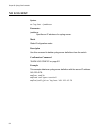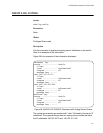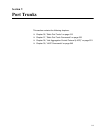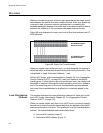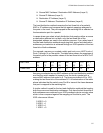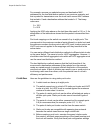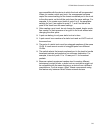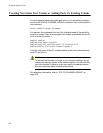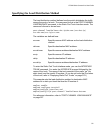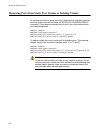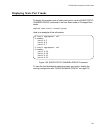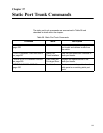Chapter 36: Static Port Trunks
518
For example, assume you selected source and destination MAC
addresses for the load distribution method in our previous example, and
that a packet for transmission over the trunk had a source MAC address
that ended in 9 and a destination address that ended in 3. The binary
values are:
9 = 1001
3 = 0011
Applying the XOR rules above on the last three bits result in 010, or 2. An
examination of the table above shows that the packet is transmitted from
port 9.
Port trunk mappings on the switch can consist of up to eight ports. This
corresponds to the maximum number of ports allowed in a static trunk and
the maximum number of active ports in an LACP trunk. Inactive ports in an
LACP trunk are not applied to the mappings until they transition to the
active status.
You can assign different load distribution methods to different static trunks
on the same switch. The same is true for LACP aggregators. However, it
should be noted that all aggregate trunks within an LACP aggregator must
use the same load distribution method.
The load distribution methods assume that the final three bits of the
source and/or destination addresses of the packets from the network
nodes are varied enough to support efficient distribution of the packets
over the trunk ports. A lack of variation can result in one or more ports in a
trunk being used more than others, with the potential loss of a trunk’s
efficiency and performance.
Guidelines Here are the guidelines to using static port trunks:
A static trunk can have up to eight ports.
The switch supports up to a total of 32 static port trunks and LACP
trunks at a time. An LACP trunk is counted against the maximum
number of trunks when it is active.
The ports of a static port trunk can be either all twisted pair ports or
all fiber optic ports. Static port trunks cannot have both types of
ports.
The ports of a trunk can be either consecutive (for example ports
5-9) or nonconsecutive (for example, ports 4, 8, 11, 20).
The ports of static port trunks must be from the same switch.
Static port trunks are compatible with spanning tree protocols
because the switch views them as single virtual links.
Before creating a port trunk, examine the speed, duplex mode,
flow control, and back pressure settings of the lowest number port
the trunk will contain. Verify that these port configuration settings



